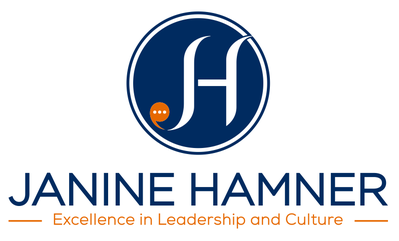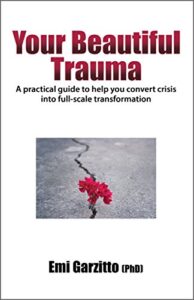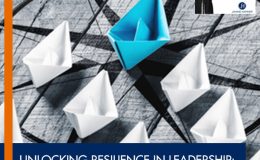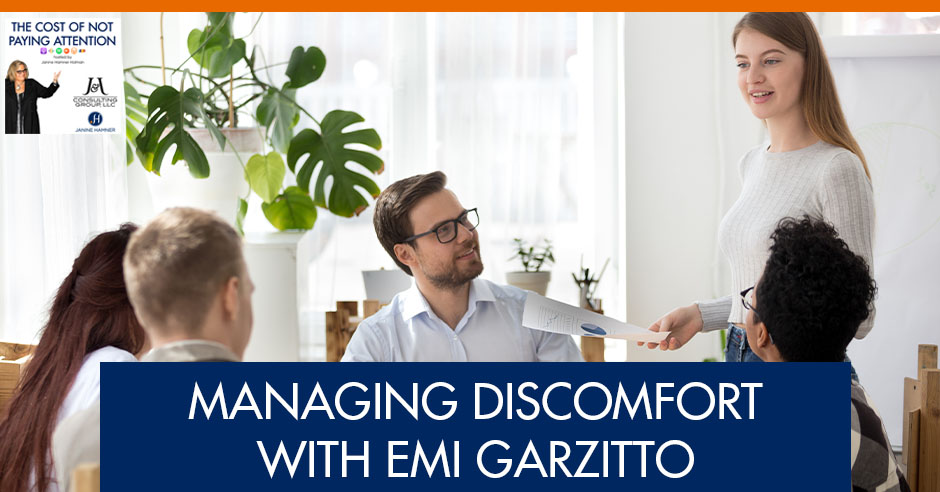
In professional settings, conflicts are bound to ensue. It all comes down to managing discomfort in the workplace. Emi Garzitto is a conflict coach, workplace climate specialist, author, and keynote speaker with Creative Edge Consulting. She has been developing, promoting, and implementing positive communication and conflict support skills for 27 years while helping organizations and communities along the way. In this episode, she chats with host Janine Hamner Holman to discuss practical tips on overcoming workplace conflict. Emi also emphasizes the importance of discomfort, unease, and uncertainty, in facilitating growth. Tune in to learn more and implement helpful advice to improve your professional and personal relationships.
GUEST: Emi Garzitto | LinkedIn |Buy her book: Your Beautiful Trauma: A Practical Guide to Help You Convert Crisis Into Full-scale Transformation
HOST: Janine Hamner Holman | [email protected] | LinkedIn, Facebook, and Twitter | Subscribe to my Newsletter! | Book me to Speak!
—
Listen to the podcast here
Managing Discomfort With Emi Garzitto
What am I paying attention to now? Challenges and resilience. I went to Mexico for a little getaway. Actually, I drove down to Mexico and it was the first time I have ever done that. It was great! I was staying in a little condo right on the beach. I could hear the sounds of the ocean as I relaxed and read the Bubblegum novel. It was exactly what I needed however I was met with challenges and my resilience was test on the way back.
I knew I needed to be on a certain road to go over the border, however I couldn’t get to it because all the feeder roads were closed. Not only were they closed, but they had police officers on them. I kept trying different ways to get into the traffic going over the border but the traffic going over the border was intense! I’m sure that is why all these feeder roads were closed because there was too much traffic that allowed people to cut in and they had decided it would not work.
My phone and my navigation were both not working, and I do not speak Spanish well. I got frustrated trying to figure out how to get on the road and go over the border. I was only 30 miles south of the border. It took me two and a half hours to get on the right road and three more hours to get over the border! During those first two and a half hours, I was not sure if I was going to be able to get into the traffic to go over the border and make it home. I found myself so frustrated that I cried to a police officer who did not speak any English about my frustration.
I started to think about how it used to be before COVID, before George Floyd was murdered, before we were homeschooling all of our kids and dealing with all of the things that we have been dealing with since 2020. Our baseline would be somewhere tummy high or maybe chest high, and something would happen. It would be a little hard to manage but we would get through it. However, now the baseline for many people, including me, is in the middle of our forehead. Something happens and we are immediately underwater. It is difficult to have resilience in the face of challenges. Although it is difficult, it is possible! My guest today is an expert at overcoming conflict so, without further ado, I would like to introduce her.
Dr. Emi Garzitto has been developing, promoting, and implementing positive communication and conflict support skills for many years. Her doctoral research focused on helping communities learn how to get along. She has partnered with organizations such as BMO, Rainmaker, 7Geese, TorontoStarts, Chartered Professional, HR, Access Youth, the University of California, and MPowerLives. She is the author of Your Beautiful Trauma: A Practical Guide to Helping You Convert Crisis to Full-Scale Transformation.
—
Welcome, Emi.
Thank you for having me.
You are welcome. Thank you for being here. I appreciate it.
I love your intro, and if I can dive right in, I love how you made the point where pre-COVID, we were all chest-high, and now we are closer to above our eyebrows. It takes so little to have us flip our lid or lose our composure. That is such a great way of framing exactly what I’m seeing in my practice every day.
Tell me about what you are seeing in your practice every day.
What’s most personal is universal. What’s happening outside is also happening internally and vice versa. Share on XSince COVID 2020, there have been many things that have shifted. To add to your personal example, I also work in schools with children, and a fellow counselor said, “Since COVID, there has been: the George Floyd incident, a reckoning with the first nations and all our past, and there has been a much bigger conversation around gender.”
All of these big idea changes have informed and created a sense of stress, positive or negative. It is a stress that now puts us a little more over the edge than where we were prior to COVID. The response that I’m seeing is that smaller incidents are creating big issues for organizations, schools, families, and individuals. I’m seeing that what is most personal is universal. What is happening outside is also happening internally and vice versa.
What do we do in this mess? How can we begin to develop? One of the many places where you and I connect is understanding what are some of the causes of what is happening. One of the things that I got hooked on several years ago is neuroscience which is looking at what is happening in our brain. As you know, our brains hate uncertainty. I will pick a fight with my husband to get certainty about something. Even if by picking that fight, I’m going to get an answer I do not want.
My brain, because it hates uncertainty unless I’m being conscious of it, is going to push me to pick a fight with him to get what I do not want just so I can get certainty. Our brain is swimming in so much uncertainty right now. It is part of the reason that our resilience, our ability to handle one more thing, is low.
What ideas, tips, or thoughts do you have around how we can use our collective and individual trauma to transform? How can we create more resilience?
I’m going to pick up again on such an important thread that you have alluded to, and that is this tug of war with certainty and uncertainty. I have the same issue here, Janine. I wrote a blog about my addiction to certainty. The reality is that our brains need both certainty and uncertainty. Uncertainty is how our brain figures out what to do when it is in danger. It is the practice that it requires to hone our skillset that is our social-emotional landscape. The piece that I want to bring forward is that we have more tools to make our world feel certain, comfortable, or give us this illusion of ease.
What it is doing is inadvertently weakening our resilience muscles because we will do what is easy. We want to do what is easy, but because we have so much access to ease, we are not getting the practice of unease, uncertainty, and discomfort. What I see with clients when I’m speaking with them one-on-one or when I’m working with children is that pain is now discomfort and we are becoming less able to say I’m uncomfortable versus I’m in pain.
It is important to frame our world around discomfort because it is our job to manage our discomfort. We have this biological imperative. We were trained for millions of years in our evolutionary biology to figure out things from an early age to problem solve. We have been taking that away in the guise of certainty or safety. In some ways, we have to bring back discomfort and this illusion of safety because it is about being safe. If we are always safe, our brain never has an opportunity to build a skillset of learning what to do to manage itself and picking up the cues of comfort versus distress, pain, and danger.
I love what you are pointing to but I want to pull out this thread around the idea that we have collapsed discomfort and pain. I had an opportunity to present at the US Navy’s first conference on diversity. While I was there, one of the other presenters was talking about living outside our comfort zone.
He asked a great question: “How many peak experiences have you ever had inside your comfort zone?” The reality is zero. Peak experiences do not live in our comfort zone; they do not live where things are easy. They live where things are a little hard, we have got a little bit – or a lot – at risk, and we are challenging ourselves or learning something new.
This idea that we have collapsed uncertainty, discomfort, and pain and made them all the same is important because once we distinguish that, we can start to uncollapse them and pull them back out. If I had a magic wand, I would love it if I could lose some damn weight and never gain it back again. I’m a human who has struggled with my weight my entire life. I would love that magic wand.
We want to do what’s easy but because we have so much access to ease, we are not getting the practice of unease, uncertainty, and discomfort. Share on XAll humans are designed that way. We want a quick fix and the thing that is easy. We must be aware and remember that our brains will be healthier if we go through discomfort, and that peak experiences happen outside of our comfort zone. The juicy parts of life are not lived when things are easy. They are lived when things are challenging. Part of what I hear you saying is one of the tricks to start to decouple discomfort from pain is to think, “That is a little uncomfortable. I do not like it much,” and realize that we have an opportunity to get comfortable with being uncomfortable, which is one of the things I say to clients maybe more than I should.
I’m often working with people around having challenging conversations about whatever it is that is happening inside their organization that needs to get straightened out so they can get comfortable being uncomfortable. What if we were to realize that getting comfortable with being uncomfortable is part of what is going to make our brains more healthy?
It is necessary. This is Augusto Boal’s words, but it is what I use a lot in my work, and that is, “Safe enough to be dangerous. Creating cultures that are safe enough to be dangerous.”
Tell me more about that. What does that mean?
It is what you are talking about. We need to have spaces that are not sanitized, where people are afraid to speak or to be out of line, which is what I’m starting to see not only in universities and higher learning but in all our systems as we are going from the natural pendulum swing from one extreme to the other. There is this frozen fear of saying or doing the wrong thing for public humiliation or whatnot. That is one piece of it.
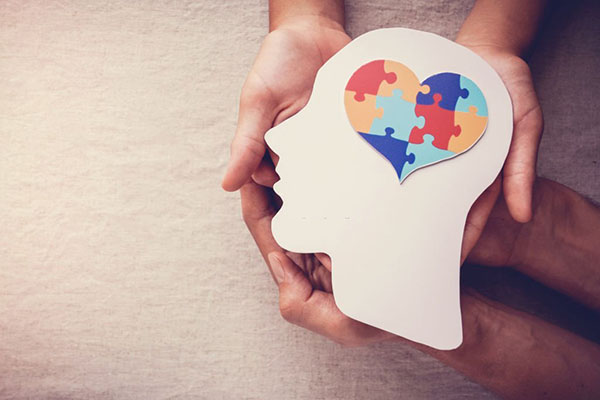
Managing Discomfort: Uncertainty is how we learn, how our brain figures out what to do when it’s in danger. It’s the practice that it requires to hone our skillset that is our social-emotional landscape.
The goal is to have a community or a culture where we can be diverse, share opposing opinions, and hold differences, all while feeling okay. Not comfortable, but okay. This is why, for me, conflict is potentially transformative because any conflict is both personal and universal. There is a piece inside that is not sitting well with us.
Especially if we do not have that skillset, practice, and resilience, we will throw it out in the outside world. You are the problem versus there is a piece here that I need to pay attention to. It is a to-and-fro movement. With it is an opportunity because whatever conflict I have, there is a block. There is a peep there that is allowing me to not go past this point.
You brought up weight. I have also had similar situations and there was a time when I was super uncomfortable with my weight. If somebody said something about it, that was my edge. It is not okay for somebody to make fun of your size, but it is also information I can use about what needs my attention.
The example is, if somebody says something, it does not bother me. I might say ouch, wow, or find another way, but it does not have the same resonance. That is what I mean. That is an example of what is happening now in our culture as we are debating and having these conversations inside our workplaces, homes, and playgrounds. These are the things that are brewing.
I love what you are pointing to there because so much of the way that we view the world is through our own personal lens. If I am looking at the world through the lens of a woman who has struggled with her weight her whole life, I’m going to see, hear, and take things in a particular way versus looking through the lens of a strong, powerful woman, an executive organizational development consultant, and an organizational leader, I’m going to be looking at things through a different lens. Something that you would say to me, because of the lens that I’m looking through and because of the story that I have made up about it in my own head, is going to land differently.
We need to have spaces that are not sanitized where people are afraid to speak or be out of line. Share on XWhen looking at conflict and the doctoral work that you did, the world in which we now live where many of us, for whatever our particular set of reasons, we hear something and rather than assuming positive intent, we assume negative intent. We hear it through our own pain or trauma lens. It creates conflict, which may or may not be the way that it was intended. What do we do with all that mess?
I’m going to put this again in the same context: Is that safe enough to be dangerous? We need both. We need that side of you that is strong and a leader who knows herself. The workplace culture is great with that frame. They like that one. You get to do that, and that gets celebrated and gets a lot of pings. But we also need to celebrate and attend to the vulnerable piece.
This is the challenge in the workplace. I cannot share that internal fear. I can only be this, not that. I can be the leader. I can be strong. I can make good decisions and be decisive. I can even make errors. I get to be strong about it. We lose, and it becomes dangerous if it is extreme on both ends. What I’m seeing now is that the vulnerability side is now becoming extreme.
We are getting lots of pings for our vulnerability for being the victim. I do not like that word. Either of those extremes won’t work. We need to find a place where we are in the middle, both get honored, create places that are safe enough where we get to be vulnerable, we get to be strong, and we get to be successful because that is also who gets equal access to success but also equal access vulnerability. We need that balance and it changes all the time.
There is an activity that I do when I work with people. It is a game where you are facing a partner, and you grab each other’s elbow, and you have to push as hard as you can. When you find that someone is a little stronger or weaker, you are always trying to find the balance. You have got to constantly put some energy into it. That is safe enough to be dangerous.

Managing Discomfort: If we are always safe, our brain never has an opportunity to build a skillset of learning what to do to manage itself and picking up the cues of comfort versus distress versus pain versus danger.
It is the experience of putting some energy in, connecting, and dealing with a moving target. It evolves. It is not stagnant. There is a power share, but at the same time, I get tired or I take a breath, so you have got to lean farther forward. That is the metaphor. That is a physical feeling and experience of, in my view, healthy culture, healthy families, healthy dynamics, and safe enough to be dangerous spaces.
I love that metaphor because part of what it is pointing to, like where we started, we want things and we think it should be easy to manage people. It is the reason that we promote great individual performers and never train them in how to manage because we think it should be easy to manage. It is, in fact, not easy to manage.
If managing is easy, it might be because one is managing poorly. It is a skill to manage well. Part of what you are pointing out with that exercise is that in an organization, in a relationship, nothing is easy and nothing is stagnant. There is always going to be a push-pull, an opportunity to learn and get a little uncomfortable. You are pushing harder than I want to push now. We get to modulate that together. I love that idea. I love the physicality of that concept.
When we find ourselves overwhelmed or in a conflict that we do not know how to navigate through, based on your incredible body of research, work, and understanding, what are ideas or tools to help us either manage ourselves or reframe the conversation in our head or with the person or people with whom we are having a challenge?
I’m going to give you some quick and dirty tricks and tips. It is death by a thousand cuts, life by a thousand efforts. There are small repeated practices. That is how you train your moral brain. What you are doing in moral practice is in your body. It is in that nervous system that the polyvagal nerve. Number one, you need to manage you. Before you look at the person in front of you, you need to think about you.
Before you’re looking at the person in front of you, you need to think about you. Share on XThe work is what is happening in your body. Can you name your feeling? This is becoming increasingly more difficult for my clients. What are you feeling right now? If you can’t name that feeling, think about how much energy you have in your body. From 0 to 10, how much energy is in your body? That will also give you a sense of what you are feeling.
In general, if five is, “I’m calm, I’m ready to listen and learn.” Anything in the 6, 7, 8 range could be frustrated, anxious, worried, nervous, angry, or annoyed as we are moving up the ladder. That means you have more energy in your body. Your body thinks, because we still have the biological tools for fight or flight, that there is a predator and that you are physically in danger. Our body still responds that way.
We have got all these chemicals we need to get rid of. We need to find what helps us move. If I’m frustrated, I can’t learn. My brain is off. What works for me to get rid of this energy? We need to develop that toolkit in our worlds where we are doing this on a regular basis, not when we are elevated but when we have those tools. That is important.
Doing and practicing this when you are not in a high state of arousal because again, we are having trouble recognizing it. A high state of arousal now might be hard to recognize. When we are feeling discomfort, and there is energy in our body, what can we do to move that energy? For some of us, that is breathing, walking, or doing the heavy lifting.
All these mechanisms are often physical, so find your toolkit. My website has a lot of ideas. There is also a free manual that helps you explore your anger, conflict, and what gets you mad. It also has a huge list of ways with which you can manage that. You can download that for free. You have access to a lot of free resources online.

Managing Discomfort: We need to find a place where we’re in the middle, where we both get honored, where we create places that are safe enough where you get to be vulnerable, where you get to be strong, where you get to be successful.
That tool that you were mentioning, is that on your website?
Yes, it is on my website. There are a lot of practical blog posts. They will look at what is one strategy and unpack it a bit more and say why. Let me share some that you might not have thought about.
- Breathing and moving is a big one.
- Having a pet is great, especially dogs. I’m a big dog lover. Dogs have been with us for a long time. They were the first animals that we domesticated, and they help calm our nervous system. We have a symbiotic relationship. Having a pet, especially one that you can connect with, one you can pet.
- Fidgeting or finding ways to fidget to manage some of that nervous energy is a tool.
- Sound can help some of us. Some people do not do well with sound and need to block it out. What can help is a sound that you make, like a humming, a mantra, or a chant. All of the things that were historically pieces of culture also helped manage our nervous systems.
While you were talking, I noticed the fact that I make that sound a lot when I’m listening to somebody who is saying something interesting. Part of what I’m doing is affirming. It is a nonverbal, although auditory connection, but I wonder if part of what I’m doing is using sound to signal my brain like, “Pay attention to this.”
You are putting a little footnote or a bookmark on that space.
If you don’t know you, you can’t manage you. When you’re coming in, you’re going to be reactive. You need to have a sense of self and what’s happening there. Share on XI love the idea of sound in part because I had the opportunity to be down in Mexico and got present to the fact that my two biggest calming sounds are ocean and rain. I am a water baby. The movement of water, the crash of the ocean on the shore, the sound of rain hitting the Earth. I love it when it rains to get in my car and listen to the sound of rain on the hood of my car.
Having some of those sounds that we can either play or pull up in our auditory banks when something is happening, where we could use some resilience and self-regulation, I love that. One of the things that I sometimes remember in these kinds of situations is that the feeling of anxiety feels the same as the feeling of excitement. It lives in my body in the same place. It all lives in my upper chest right underneath my collarbone area. That is where I feel the excitement. It is where I feel like, “How is this conversation going to go? I’m not sure what the next thing to do or say is,” not the anxiety like, “Am I going to be able to figure out how to get to the border?” It all lives in the same place for me.
It is part of what I think of as the front of the hand and the back of the hand. Many of our experiences, if we turn our hands around anxiety, fear. If we turn it around excitement, fear. If we turn it the other way, we might be able to see it from a different perspective. Sometimes, one of the things that I do is public speaking, and I can get that butterflies in my stomach feeling that I can feel like fear or anxiety. If I can transform that into excitement, “I am excited about this. I am at stake in this.” It then enables me to have a different experience of myself at that moment.
What you did is a great example of another practice. That is, where do you feel it? You have a good amount of awareness in being able to say, “My anxiety and excitement live here.” To know that and to name that is a way to manage your anxiety, fear, and your feeling. What do you feel? Where do you feel it? Those are some of the primary ways of managing that internal conflict.
I want to give you some quick ones for that external conflict because those are the ones that my clients often ask like, “How do I like my boss?” First, what do you feel? Next, where do you feel it? All that stuff touchy-feely stuff is critical. If you do not know you, you can’t manage you. When you are coming in, you are going to be reactive. You need to have a sense of self and what is happening there. When, down the road, you are ready, you will have access to being able to manage and heal that vulnerability. When you do, you get freedom because that place will no longer stop what comes next. This is about helping you become free.

Managing Discomfort: When you go into a conversation, make sure you know what you want. Never go in to just vent. That’s what friends are for.
When somebody is angry or upsetting to you, you have all kinds of options. I’m going to give you a few. Number one, somebody says something in public to you. You can make a quick public comment like, “Ouch. Wow. I was not expecting that.” Put a pin in that there, because most of the time, that is not the time nor the place.
The boss undercutting you in front of clients, or in front of others, repeatedly by small little statements. When you are going to have that conversation, you say, “Jeff, I do not feel good about blank. I would like to find the time where I can have a good conversation about it with you.” Find a time and give them the heads up that you are going to be talking about this. Be very clear and direct. “This is what you say.” You give them time then to slow down the conversation by paraphrasing back what they are saying and having time for their brain to understand what is going on.
The other piece I’m going to say is when you go into a conversation, make sure you know what you want the end result to be. Never go in to vent. That is what friends are for. When you are having a one-on-one, you want to be as clear with the information, and you have to be clear on your want. For example, by the end of the conversation, this statement may be true for you “I want to hold my relationship with my boss. I do not want to be afraid of him/her.” I could go on, but if you can do those things and practice those ideas, you will get the biggest bang for your buck. Start thinking about how to manage you.
I love the tool of paraphrasing because it makes sure that you are hearing the other person, and it gives them an opportunity to correct something if you heard something wrong or if what you heard is what they said but that is not what they meant. It gives them another opportunity to try it again. Even more than that, I love the way that you framed it, which is an opportunity to slow the conversation down.
When we get into any conversation where we have the opportunity for conflict and a conversation like this is rife with the opportunity for conflict. Our brain is going to get hijacked. The more that we can slow the conversation down, the more opportunity we have to reengage our brain, get out of our ancient brain, and into our thinking brain, the more opportunity they have to do that, too, if we are having a slower conversation. When we get slower, we usually also get a little more resonant in our voices. Our voices often get a little deeper and that can be calming. Using those auditory tools, getting into our deeper voice, speaking slower, and listening intently can be keys in layering on what you are talking about.
Plan it, practice it, rehearse it. The more you do it, the better you get it. Share on XEverything you said, Janine, is not natural for our brain. As soon as we are under threat, our brain goes fast, our talking goes fast, and we lose our hearing and sight. The other big one for me is rehearsal. It is about planning it, practicing it, and rehearsing it. The more you do, the better you get at it, and you will never be perfect. It doesn’t matter how many years you got on you, and it is not about that.
I could talk to you forever, but we should probably begin wrapping this up. Before I do, is there anything that we have touched on or something we have not touched on yet that you were hoping we would talk about that you would love to leave people with?
This is information overload. We covered a lot. We have already chatted about it, but there are a lot of free resources about any of this information, and you are welcome to it. To me, this is my life practice. This is about helping us be better, do better and get those opportunities for transformation that conflict and crisis allow if we let it.
Thank you, Emi. This has been a wonderfully rich conversation. Remember, great leaders make great teams. Until next time.
Important Links
- Bubblegum
- Dr. Emi Garzitto
- Your Beautiful Trauma: A Practical Guide to Helping You Convert Crisis to Full-Scale Transformation
- https://www.Facebook.com/ConflictAlchemist
- https://Twitter.com/Egarzitto
- https://www.LinkedIn.com/in/EmiGarzitto/
- https://Medium.com/@EmiGarzitto
About Dr. Emi Garzitto
 For over 27 years, Dr. Garzitto has been working in conflict and crisis research. Her practice includes utilizing conflict coaching, neuroplasticity research and counseling skills in supporting executives, employees, teams and workplace communities with positive communication skills. She has presented and worked in education settings ranging from Elementary and High Schools to Public and Private universities in both Canada and the United States. Dr. Garzitto has also mentored Student Teachers, developed training workshops, mentorship programs to support student teachers in both inner city and university focused high schools Trained teams in conflict and communication styles. She has also supported acute conflict in nonprofit organizations as well as volunteer advisory boards Led investigative interviews between union staff and management.
For over 27 years, Dr. Garzitto has been working in conflict and crisis research. Her practice includes utilizing conflict coaching, neuroplasticity research and counseling skills in supporting executives, employees, teams and workplace communities with positive communication skills. She has presented and worked in education settings ranging from Elementary and High Schools to Public and Private universities in both Canada and the United States. Dr. Garzitto has also mentored Student Teachers, developed training workshops, mentorship programs to support student teachers in both inner city and university focused high schools Trained teams in conflict and communication styles. She has also supported acute conflict in nonprofit organizations as well as volunteer advisory boards Led investigative interviews between union staff and management.
